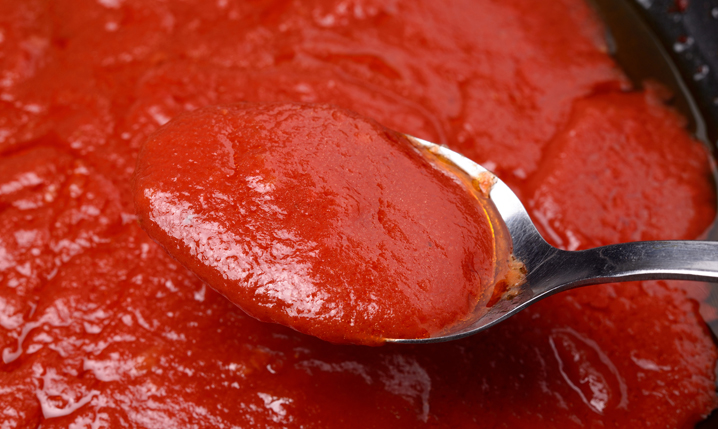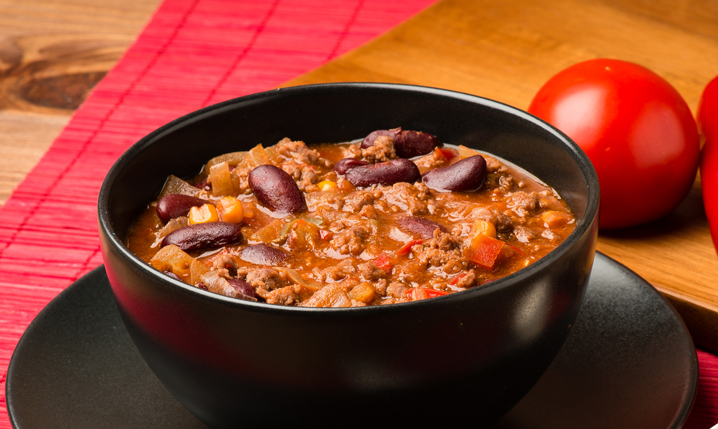Looking to find out how to thicken chili? Perhaps you’re looking to create a perfect chili-con-carne or some other spicy deliciousness. Whatever your goal, this guide has you covered.
Read on to learn how to thicken your chili.
Natural methods:
Natural methods work best because that is how chili was originally made in many cases, if you can thicken your chili with these methods you’ll be one step closer to mastering the dish.
1. Water Evaporation
As water evaporates in your chili during the cooking process it will start to reduce. This in turn thickens the chili, but only somewhat. It can be a risk to attempt to thicken your chili via this method alone as it can lead to overcooking the food which can produce tasteless food. Something nobody wants. That said, adding a couple of tablespoons of additional water can be a good idea to help naturally thicken the dish.
2. Let it cool
Another thing to keep in mind is that protein shortens and becomes rigid as it cools, so as the temperature drops your chili will thicken as well. This is something to keep in mind during the cooking process.
If your chili is really thin then these two methods are not doing enough to thicken the sauce of your chili. So that is when you want to look at additional ingredients.
Ingredients:
If natural methods fail then you should look at additives that can be used to thicken sauces such as chili. Check these out.
1. Cornstarch
Cornstarch is a great additive to thicken up sauces, and chili is no exception to that.
Unlike other corn alternatives like cornmeal, corn flour, or other thickening agents, cornstarch is a good choice as it doesn’t interfere with the flavor of your food, which is why we prefer it. An added benefit of cornstarch is that because it is made from corn it is gluten-free.
You can mix it into your chili if you’re willing to give it a good stir, or you can add it to a little hot water and stir until it thickens up enough without any clumping.
Make sure to add the starch gradually as it can take a quick minute to fully thicken! Add in increments until you are satisfied with the consistency of the sauce.
2. Xanthan Gum
Xanthan gum is a popular additive that is used as a thickening agent in numerous food products and recipes.
Xanthan gum is extremely effective at thickening liquid in low concentrations, just a few tablespoons of water can still provide a thick paste. This makes it a great option for anyone who loves extremely thick chili.
This gluten-free option is also tasteless and so it will not affect the flavor of your dish in any way. It is almost perfect for the job, except for the fact that it can be an expensive addition to your kitchen. It is also not always available to purchase in grocery stores.
If you have xanthan gum in then it might be the perfect way to thicken chili, but failing that you will have just as much success with the more widely available cornstarch.
3. Potato Starch
If you have it then potato starch is another great option. Used for thickening things like stews and soups, this isn’t the best option for chili as the potato-ey flavor can be less than ideal.
The flavor in chili can be pretty powerful, so using potato starch is still a good option even though it isn’t tasteless.
Like with cornstarch, you should do your best to add a little at a time and stir frequently until it reaches a good consistency. You can also mix it in with water until the liquid has a nice viscosity that you can add to your chili.
Adding potato starch to water first is an option you might wish to take if you decide to give it a little seasoning to attempt to offset the flavor. So keep that in mind when deciding about how to best add it to your dish-to-be.
4. Tomato Puree

Tomato puree is our least preferred option because it can be the most difficult to get right. That being said it is a workable option should you not have some of these other ingredients to hand.
Tomato is a good complementary flavor to chili so using tomato puree is not a bad idea in and of itself. That said this thick tomato paste can have a bitter or sharp edge to the taste. So you can offset that by adding a little brown sugar or muscovado if you want to be bougie like that.
Because it is harder to get right you want to be adding the puree to your dish throughout the cooking process, especially toward the end as you begin to further reduce the heat. Add just a couple of ounces every few minutes and stir well until you are happy with the consistency and taste.
A last note on tomato puree is to make sure to get the best quality one you can, while almost all of them are cheap, some of the cheaper tomato paste you can buy will be loaded with extra ingredients, as well as sugar and salt, so be aware that this can also affect the flavor.
Conclusion
Now you know how to thicken your chili, so go and have at it. Bon appetite!
